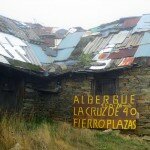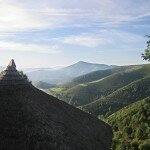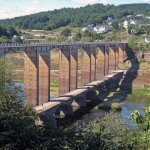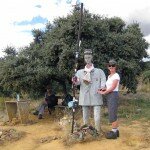Peak Baggers.
I first became aware of what a peak bagger was many years ago when lost in fog for twenty minutes on a Lake District mountain.
Our leader was a Scot who just disappeared. All we could do was stand there in sleet and dense fog, and stand we did for twenty minutes. Eventually he returned and we learned that there was a secondary Monro which he hadn’t touched the top of, and this was his one chance.
Many of us are just happy to simply get to the top of any old hill. A considerable number of more fit walkers rise to the challenge of collecting or “ticking off” hills and mountains climbed, and what more natural than to arrange them in order of heights.
Originally the idea was confined to Scottish hills and mountains and there are lists of Scottish hills in each range. The idea seems to have spread throughout the British Isles with lists available for different areas.
Monros.
These are hills above 3000ft. An original list of Scottish mountains over 3000ft. was drawn up by Sir Hugo Munro around 1890. The list has been revised a number of times and the number at present is 283.
Corbetts.
There are around 220 Corbetts in Scotland, a list compiled by J.Rook Corbett. These are peaks over 2500ft but less than 3000ft. requiring a final ascent of 500ft. on all sides.
Donalds.
Hills in the Scottish Lowlands of 2000ft. were named Donalds by Percy Donald there are 89 of these.
Grahams.
A list of Scottish hills between 2000ft. and 2500ft. in height. 224 is the latest Scotland count. Interesting that they were initially called Elsies derived from the fact that they were lesser Corbetts (LC’S). Clever.
I suppose this listing could go on and on, there are complex definitions of various other kinds of hills, including Birkett’s and Marilyn’s.
Are there special names for hills between 1500ft. and 2000ft. or even between 1000ft. and 1500ft. I don’t know but I think I will name the these ones Irvines.
Now that I’m getting on, I seem to be climbing more of them. Find out more from this site and there are others!!
The Way of St. James to Santiago de Compostela
The Way of St. James in North West Spain, has been walked by pilgrims for a thousand years. Several walks lead through Europe, finally meeting at Santiago de Compostela. The pilgrims visit the tomb of St James where the relics of the first martyr are stored in a silver casket. They will have walked through Europe following worn tracks which weave their way through villages and farmyards. Refuges and monasteries have been built along the way to provide shelter. Food and water are available in all sorts of places for the pilgrims. Some walked to find themselves, some to learn truths and others simply to follow footsteps. It is a beautiful area to walk in and well worth doing for whatever reason one chooses.
In September I joined the Camino, the Way of St James at Leon, 140 miles from Santiago, and hoped that I would be able to complete the journey on foot in 11 days without too many blisters or too much pain … and I did. And I learned something important, something which I think is worth sharing. Let me explain.
At the carousel at Madrid airport our group of walkers claimed their suitcases but it soon became apparent that mine was not there. On reporting the missing luggage to Iberian Airlines Information desk, I was given a small… very small… emergency toilet bag to tide me over until my own bag was located and delivered to my hotel. I pointed out that I was walking the Camino and would be moving accommodation each day. I left 4 addresses which the lady assured me would be more than enough.
On analysing the situation, I realized that the position was not critical… I was wearing my walking boots so I could start my walk in the morning even if my bag did not arrive for 24 hours. I had money and passport with me, my camera , raincoat and novel were in my backpack.
The emergency bag had an interesting collection of items: a one-size fits all white t-shirt, a pair of white cotton boxer shorts … that was my bedtime lingerie sorted….. A pair of multi-size plastic flip-flops, paper pants—yug! bin quickly…. brush and comb, toothbrush, deodorant, a small tin of Nivea cream — and a sewing kit. I had nothing to sew!
Next morning I started off with everyone else, no-one mentioned that I was wearing yesterday’s clothes and all went well. I didn’t miss my bag too much. On arriving at that night’s hotel in Astorgia, 10 miles along, there was no news for me, no luggage had been delivered for me, no message from Iberian Airlines. Everyone dispersed to change for dinner dragging heavy suitcases up stairs and along corridors while I carried my half kilo bag. I showered – and put on the clothes I had already worn all day. Oh No! this will not do! I had 20 minutes to shop before dinner. I rushed out the door and in 10 minutes I had bought a pretty t-shirt, and a very sparkly pair of sandals. Cut-off trousers completed the outfit. I was ready for dinner.
And this, dear readers, was my wardrobe for a week. Everything was washed before I got into bed, wrung out in towels and hung to dry in any airy space I could find. All was dry in the morning. Each evening when we arrived at the next hotel, Diane, our leader asked if Iberian had been in touch– the answer was always ‘no’ So, again I collected my tiny bag and went to my room while others dragged their 15kg plus loads to rooms on various floors. Never again will I pack those 2 pretty dresses which need those 2 different pairs of sandals, those special trousers etc etc…. that makes life too difficult.
Eventually the day came, a full week later… and my bag was waiting for me. I wasn’t sure if I wanted it. I had got used to the freedom of travelling light, my room was never untidy, 2 minutess packed me in the morning , and I had no heavy weight to drag to my room on the top floor. However, I had missed my perfume and my ear-rings, and my nail polish was beginning to chip, but, truthfully I missed nothing else from that bag.
I had learned a truth on my way to Santiago. We have acquired too much stuff.
Dorothy Eccles
POTTERING IN PATAGONIA.
I have resisted the temptation to say, unusually for me, that it is Chile in Patagonia, which is as well. We had freaky hot weather, and by the time we hit Buenos Aires, the fourth hottest day in fifty years of climate statistics was recorded at 38 degrees centigrade.
However, let us start at the beginning. It took three flights to get to Santiago, or in Irene’s case, almost into Santiago. As I was about to exit customs, I saw her being led away. The moral is don’t try and bring two apples into Chile. Later that night, we were able to laugh at how she talked her way out of it, as we sat in a police station, whilst a report was filed on the necklace that was torn off her neck en route to the restaurant.
Next stop was Valparaiso on the coast, with its colourful painted walls and murals, some of which very political – look the other way if you are from the USA.
A short flight and bus journey brought us to Pucon on Lake Villarica. Poor weather meant we could not ascend the volcano. However the two of us took a local bus up a dirt track to the Huerquehue National Park, where huge monkey puzzle trees grow at height amongst small glacial lochans. Next a bus to Puerta Veras, colonised from Bavaria. From here we had an excursion to an extraordinary island called Chiloe. The original settlement is the furthest south that the Spanish Empire reached. The houses are made of wood from the longest living trees in the world. The wood does not rot, and the homes are painted colours which should clash, but somehow don’t. The wildlife goes from steamer ducks, which can’t fly, to penguins.
In the air again to Punta Arenas, the Magellanic penguin colony at Seno Otway and then to Puerto Natales, the gateway to Torres del Paine. This was the walking that we had been waiting for. It is easy to be disappointed by mountains that you have read about, and seen in photographs, never mind having had gear called after them, but they were fabulous. Bonnington and Whillans were the first to climb the main tower, apparently on the easiest side. It looked horrendous to me. The weather was by now so hot, unexpectedly, that people were burning. Down jackets and long johns lay lonely under the bunks. The day after we left, a huge fire ignited, started allegedly by an Israeli burning his toilet paper at an illegal camp. The whole national park had to be evacuated, with some of the guides losing all their gear, never mind their livelihoods. Israel subsequently paid compensation.
Yet another drive dropped us at El Calafate, from where you access the touristy Perito Moreno glacier. Like quite a few places in Patagonia, it is called after a man who was much admired, but never actually saw it. Mt. Fitzroy is another. The glacier is one of the few in the world that is not retreating, even though the rate of melting has increased over the last two decades. Climatic change has meant much increased snowfall, which balances out the melt. Great chunks of the 60m face impressively collapse in front of you.
Only a four hour drive this time to my favourite place, El Chalten. It is set in a gorge, with the dramatic Cerro Torre rearing up behind it, and the face of Mount Fitzroy slightly further back. By now we were in Argentina, and the wind was rising. The village felt like a frontier town from a western that was just beginning to become civilised. We trekked to the glacier below Fitzroy in atmospheric wind and rain, and to the loch below Cerro Torre. The last day was clear and idyllic, and fittingly was New Year’s Day. Cameras magically appeared out of plastic bags.
The rest of the trip involved nature treks on Tierra del Fuego, the highlight being watching the red headed Magellan woodpecker, a trip through the Beagle Channel, and exploring Buenos Aires. Finally, we flew again (I think we should have planted a forest) to Iguaçu, where wondrous falls occur in a sub tropical area where the borders of Argentina, Brazil and Paraguay meet.
The travelling was tiring, but the variety of landscapes and wildlife was fascinating. Younger versions of ourselves would have concentrated on the main trekking areas alone, and it is hard to say whether that would have been better or not. Either way, Patagonia in particular, has a unique and fascinating presence and history that needs to be experienced.
David S. Oldfield





